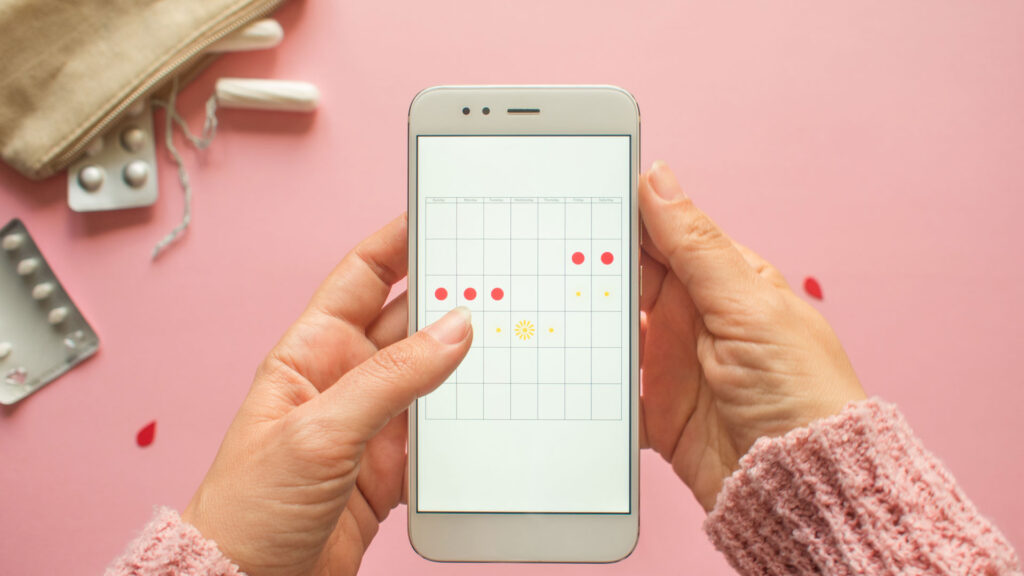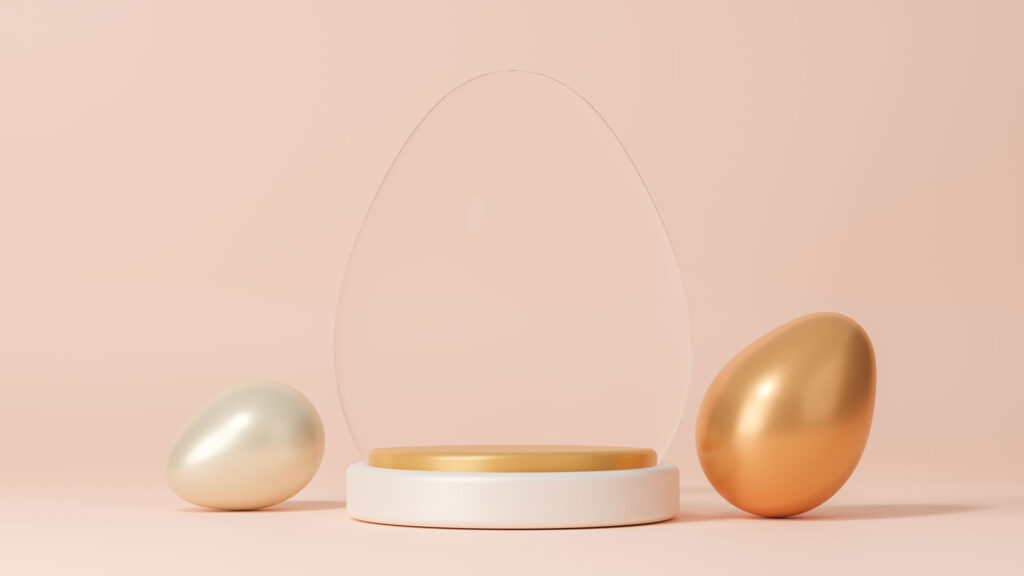Fertile window: when is the best time to have baby-making sex
- READING TIME 6 MIN
- PUBLISHED November 02, 2023
- AUTHOR Donna
Key takeaways
- The fertile window typically lasts up to five days leading to ovulation and through the day of ovulation.
- The key to figuring out your fertile days is to nail down the day of ovulation. You can do this by tracking your cycle, measuring body basal temperature, or by observing changes in cervical mucus.
- Having sex one day leading to ovulation is your best chance to get pregnant in each cycle.
- But no amount of sex will help if you don’t ovulate in the first place. There are different reasons for anovulation – we explain what are the most common.
Fertile window: when is the best time to have baby-making sex
Contrary to popular belief, it’s hard to get pregnant by having sex just anytime you like. There are in fact only a couple of days each month when you can realistically hope to conceive. This period is also known as the fertile window.
The fertile window typically lasts up to five days leading to ovulation and through the day of ovulation. 1 These six days reflect the lifespan of an egg (24 hours) and the maximum expected life of a sperm. 2 The latter can retain its fertilising capability for up to five days as it patiently waits in the fallopian tubes for the egg to come by.
Which days make up your fertile window depends on the length of your menstrual cycle. Luckily, with a bit of self-observation and some simple math, you’ll pin down your fertile days in no time.
How to calculate ovulation
To calculate your fertile window, you’ll need to learn what day you ovulate. If you have regular cycles, the math is straightforward. Start with counting how many days have passed between the first day of bleeding in your last period and the first day of bleeding in the next period. Then subtract 14 days from the end of your current cycle to roughly determine the day you ovulate. Why 14 days? That’s how long the second, luteal phase between ovulation and the end of the cycle typically lasts. These 14 days are a well-established average that most gynaecologists would use to pin down the ovulation day, but it’s in no way true for everyone. 3

Know your methods: from ovulation kits to measuring basal temperature
As mentioned, the above calculation only works if your menstrual cycles are on time each month. If their lengths are hard to predict, it’s also more difficult to calculate the exact ovulation day. But there are other methods that will help you determine your fertile window. Let’s look at what you have at your disposal.
A widely used method to nail down ovulation is by measuring your body basal temperature (BBT). This is the temperature when your body is fully at rest which is first thing in the morning. BBT is lower in the follicular phase (the first half of the menstrual cycle), and slightly rises after you ovulate. The increase is typically between 0.3°C to 0.6°C. 4 By tracking your basal body temperature each day, you can predict when in the cycle you normally ovulate. For a better overview, keep track of the data in a calendar or diary. Most period-tracker apps also have an option to record BBT. But remember that you’ll need a special, more precise thermometer to measure slight differences in basal temperature.
BBT is best used with another family planning method which is to observe changes in cervical secretions. A few days before ovulation, the vaginal mucus becomes clearer and more slippery. It feels a bit like egg white which serves a purpose: it makes the sperm travel faster. If you want to have baby-having sex, keep a close eye on your vagina.
Finally, you may also want to consider an ovulation test kit, also known as OPKs, or ovulation predictor kit. It’s used to detect the luteinizing hormone (LH) surge that happens before an egg is released. Ovulation kits use saliva or urine samples. High-quality ones can project the release of an egg within hours.
So, when should you have sex?
According to research, your best shot is to have sex one to two days before you ovulate. One study published in the journal Human Reproduction, for example, looked at data from 5,830 pregnant women+. 5 The researchers found that your chances of conceiving are as follows:
- 2 percent chance 4 days after the start of the period
- 58 percent chance 12 days after the start of the period
- 5 percent chance 21 days after the start of the period
In other words: it’s very unlikely you’ll get pregnant by doing it immediately before or after your period (not to mention while having period sex). But it’s not impossible if you have very short cycles, or you ovulate earlier than planned. The egg won’t be released yet, but the sperm, as we learned, can patiently wait for days.
The verdict: having sex one to two days leading to ovulation is your best shot! Even more precisely, it’s best if his swimmers meet your egg within four to six hours of egg’s release.
Having said all that, research also found that timing sex for pregnancy is not healthy. It can cause stress, both in women+ and men+. 6 The best advice is to relax, enjoy and have baby-making sex three to four times a week, possibly every other day. This kind of regime is just as effective as doing it every day, so no need to go crazy getting busy every hour.

No ovulation? Here are possible causes
No amount of sex, however, will get you pregnant if you’re not releasing an egg in the first place. Around 40 percent of all infertility problems are caused by the absence of ovulation – also known as anovulation in the doctor’s speak. 7
There are different causes of anovulation. Here are the most common ones:
- Irregular periods or absent periods. Ovulation is associated with a relatively predictable menstrual cycles (between 24 to 32 days).
- Polycystic ovary syndrome (PCOS). It is a disorder that affects at least seven percent of people of childbearing age. 8 PCOS causes an imbalance in the hormones that regulate ovulation. 9
- Infections. Changes in vaginal discharge can be a sign of infection.
- Age. For those over 40, hormone levels might become less predictible. With age, your ovarian reserve of eggs also declines progressively.
- Premature ovarian failure. In most cases of premature ovarian failure, the cause is unknown. 10
- Being under or overweight. Reaching a healthy weight, on the other hand, can help your fertility and reduce the risk of ovulation disorders. 11
- Stress and anxiety. Speak to your doctor if you believe your levels of stress are preventing you from ovulating.
- Medication. Certain drugs, including hormonal contraception, may affect ovulation. Again – we encourage you to talk to your doctor if you’re taking any medication while trying to conceive.
Anovulation often affects young girls who have just started their periods or women who are approaching menopause. Even if you’re healthy you can occasionally go through a cycle without ovulation. This is common and nothing to worry about. But if you think you’re experiencing anovulation on a more regular basis, go and give your doctor a visit. Chronic anovulation can be sometimes resolved with lifestyle changes, like weight loss and by reducing stress in your life, or with medications. 12
REFERENCES
- https://www.ncbi.nlm.nih.gov/pmc/articles/PMC27529/
- https://pubmed.ncbi.nlm.nih.gov/3091823/
- https://www.nature.com/articles/s41746-019-0152-7
- https://www.uofmhealth.org/health-library/hw202058
- https://pubmed.ncbi.nlm.nih.gov/23340057/
- https://bjui-journals.onlinelibrary.wiley.com/doi/abs/10.1111/j.1464-410X.2012.11577.x
- https://www.nichd.nih.gov/health/topics/infertility/conditioninfo/causes/causes-female
- https://www.ncbi.nlm.nih.gov/pmc/articles/PMC3737989/
- https://www.ncbi.nlm.nih.gov/pmc/articles/PMC1995495/
- https://www.nhs.uk/conditions/early-menopause/
- https://health.clevelandclinic.org/does-being-overweight-affect-your-changes-of-getting-pregnant/
- https://my.clevelandclinic.org/health/diseases/21698-anovulation
